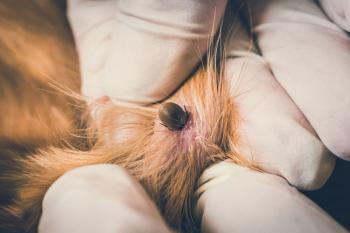
Reproductive success in the cow herd (Proceedings)
Reproductive success is a key component of the successful cow-calf herd. Reproductive parameters should be evaluated in light of the herd's production constraints and overall goals.
Key points
• Describe methods for evaluation of reproductive success in cow-calf herds.
• Utilize available information to create and interpret pregnancy histograms.
Evaluation of reproductive success in the cow-calf herd
Reproductive success is a key component of the successful cow-calf herd. Reproductive parameters should be evaluated in light of the herd's production constraints and overall goals. To identify areas for improvement, veterinarians can compare numbers from the herd of interest to standard production targets (Table 1).
Table 1. Key production targets for cow-calf herds and potential intervention points (modified from Chenowith, 2005, in Beef Practice: Cow-Calf Production Medicine)
In addition to rates of reproductive success, the practitioner can evaluate the length of the breeding season and distribution of calves born within the calving season. Ideally, we will have 60-65% of cows calve in the first 21 days of the calving season. Another 25% will calve in the second 21-day period followed by 10% of the herd calving in the last 21 day period. This leaves 5% open at the end of a 60 day breeding season. Some breeding seasons may be longer, but a rule of thumb is that in cycling females, we'd expect about 2/3 (66%) of eligible females to conceive during each 21 day period.
Modifications to this ideal calving pattern (either increases in length or changes in distribution) may result from changes in management or disease problems. Figure 1 represents a slow starting calving/breeding season and this pattern may be observed related to cows not cycling at breeding season initiation. Common causes for this pattern include poor nutrition relative to calving, a prolonged post-partum interval, and that this was the same pattern displayed by the herd last year.
Figure 1
Figure 2 represents a dramatic drop off in breeding rates and is primarily associated with an acute bull injury in a single sire paddock. This may occur in multi-sire situations if the injured bull is dominant over the fertile bull. Infectious disease rarely causes a pattern like this; however, it is possible if an animal carrying a venereally transmitted disease is introduced after breeding season initiation.
Figure 2
Figure 3 represents a slow and steady pattern that may be due to infectious reproductive loss. This pattern may also be observed as a long-term consequence of not actively front-end loading the breeding season. The patterns displayed are examples of how herds with similar percentages of open cows may actually have much different problems and require specific interventions. Using the pregnancy histogram as a diagnostic tool provides the practitioner a cost efficient method of generating a prioritized differential diagnosis list.
Figure 3
Summary
Reproductive success is critical to the beef cow-calf herd and the veterinarian plays an important role in identifying problems in this area.
Newsletter
From exam room tips to practice management insights, get trusted veterinary news delivered straight to your inbox—subscribe to dvm360.




